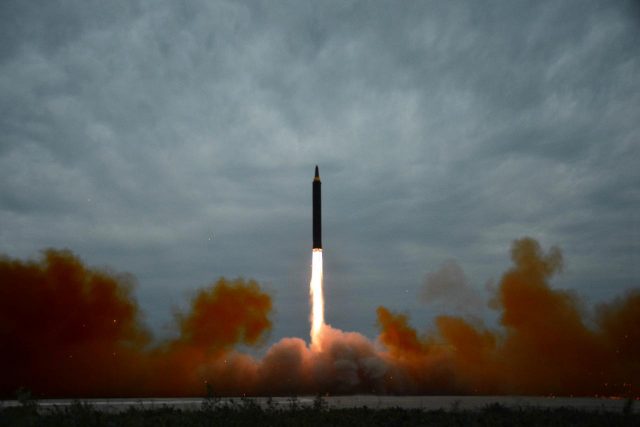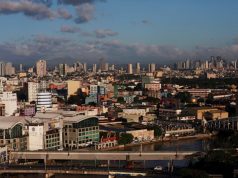
SEOUL/UNITED NATIONS — (UPDATE – 9:54 a.m.) The United Nations condemned North Korea’s “outrageous” firing of a ballistic missile over Japan on Tuesday, demanding Pyongyang halt its weapons program but holding back on any threat of new sanctions on the isolated regime.
North Korea said the launch of an intermediate-range ballistic missile (IRBM) was to counter U.S. and South Korean military drills and was a first step in military action in the Pacific to “contain” the U.S. territory of Guam.
The North’s leader Kim Jong Un ordered the launch to be conducted for the first time from its capital, Pyongyang, and said more exercises with the Pacific as the target were needed, the North’s KCNA news agency said on Wednesday.
“The current ballistic rocket launching drill like a real war is the first step of the military operation of the KPA in the Pacific and a meaningful prelude to containing Guam,” KCNA quoted Kim as saying. The Korean People’s Army or KPA is the North’s military.
Earlier this month, North Korea threatened to fire four missiles into the sea near Guam, home to a major U.S. military presence, after President Donald Trump said the North would face “fire and fury” if it threatened the United States.
In a statement the 15-member Security Council said it was of “vital importance” that North Korea take immediate, concrete actions to reduce tensions and called on all states to implement U.N. sanctions on Pyongyang.
However, the U.S.-drafted statement, which was agreed by consensus, does not threaten new sanctions on North Korea.
Diplomats say veto-wielding council members China and Russia typically only view a test of a long-range missile or a nuclear weapon as a trigger for further possible sanctions.
China and Russia’s ambassadors to the United Nations said they opposed any unilateral sanctions on North Korea and reiterated calls to halt deployment of a U.S. missile defense system in South Korea.
“I certainly hope that we’ll be able to have a strong resolution following up this … statement,” Japan’s Ambassador to the United Nations Koro Bessho told reporters after the meeting.
All options on the table
Tuesday’s test was of the same Hwasong-12 missile Kim had threatened to use on Guam, but the test flight took it in another direction, over northern Japan’s Hokkaido and into the sea.
Trump, who has vowed not to let North Korea develop nuclear missiles that can hit the mainland United States, said the world had received North Korea’s latest message “loud and clear.”
“Threatening and destabilizing actions only increase the North Korean regime’s isolation in the region and among all nations of the world. All options are on the table,” Trump said in a statement on Tuesday.
The Trump administration plans to name a former White House official, Victor Cha, as the next U.S. ambassador to South Korea, according to an administration official.
Cha served as deputy head of the U.S. delegation in multilateral talks with North Korea over its nuclear program during the administration of President George W. Bush.
The North’s latest test launch came as U.S. and South Korean forces conducted annual military exercises on the Korean peninsula, angering Pyongyang which sees the war games as a preparation for invasion.
North Korea has conducted dozens of ballistic missile tests under Kim in defiance of U.N. sanctions, but firing a projectile over mainland Japan was a rare and provocative move.
Lacking detail
Reports of the launch by North Korean media were lacking the usual boasts of technical advances.
The 2,700 km (1,680 miles) the missile flew before splashing down was much shorter and at a lower trajectory than that of an earlier launch of the same missile type.
“It is not clear what new North Korea would have learned from this launch that is relevant to a long-range missile,” missile expert David Wright of the Union of Concerned Scientists said.
The shorter range points to an intended early cutting of the engine thrust or a possible mechanical problem, as the trajectory taken would not have been useful in simulating re-entry or heating of the missile, Wright wrote in a blog post.
Kim Dong-yup, professor at the Institute for Far East Studies of Kyungnam University in Seoul said firing the missile from a densely populated area near Pyongyang and over Japan suggested North Korea was confident in the missile’s stability.
“I do not think North Korea factored in much military meaning behind yesterday’s missile launch, rather yesterday’s launch was all about North Korea being stubborn,” he said.
“At the same time, North Korea is hinting that there is room for negotiation if the U.S. and South Korea ends the joint military exercises.”









